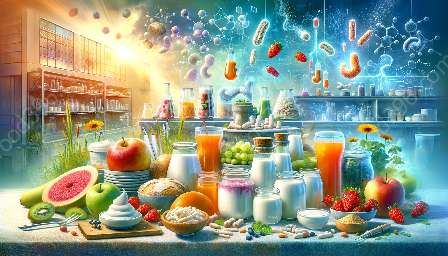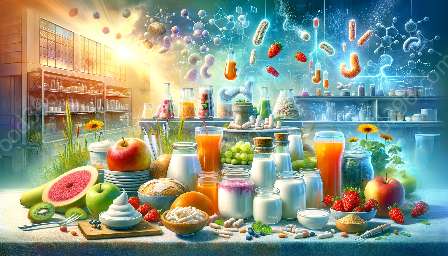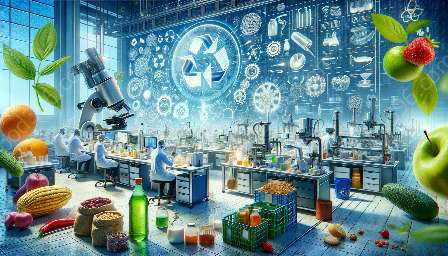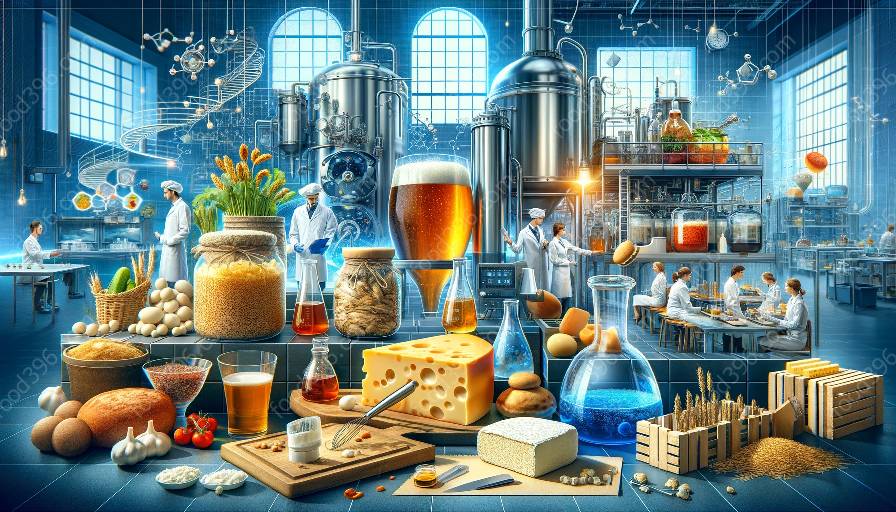Fermentation science is a captivating discipline that plays a crucial role in the creation of many of our favorite foods and drinks. From the tangy taste of yogurt to the effervescence of beer, fermentation is a process that is deeply intertwined with our culinary experiences.
The Science of Fermentation
At its core, fermentation is a metabolic process that converts carbohydrates, such as sugars and starches, into alcohol or acids using microorganisms like yeast, bacteria, or fungi. This process is essential for the production of a wide variety of food and beverages.
The Role of Microorganisms
Microorganisms are the unsung heroes of fermentation science. These tiny organisms perform the critical task of breaking down complex organic compounds into simpler substances through biochemical reactions. In the context of food and drink, the types of microorganisms used in fermentation can vary, and the specific strains substantially impact the flavor, texture, and aroma of the final product.
Applications in Food & Drink
Fermentation science has a broad range of applications in the realm of food and drink. Here are some notable examples:
- Yogurt: The transformation of milk into yogurt is made possible through the fermentation of lactic acid bacteria. This process not only gives yogurt its signature tangy flavor but also provides the added benefits of probiotics, which are known for their positive impacts on gut health.
- Beer: One of the most beloved fermented beverages, beer, owes its existence to the precise orchestration of the fermentation process. Yeast plays a pivotal role in converting the sugars extracted from malted grains into alcohol and carbon dioxide, imbuing beer with its characteristic taste and effervescence.
- Sourdough Bread: The distinctive taste and texture of sourdough bread are achieved through the fermentation of a natural sourdough starter, which contains a community of wild yeast and lactic acid bacteria. This process creates the sour flavor and airy crumb that sourdough enthusiasts crave.
- Kimchi: A staple of Korean cuisine, kimchi is a fermented dish made primarily from cabbage and radishes. The fermentation process not only imparts a unique tangy and spicy flavor to the vegetables but also acts as a method of preservation, allowing kimchi to be stored for an extended period.
- Wine: Grapes and other fruits are transformed into wine through the action of yeast, which converts the natural sugars in the fruit into alcohol. The specific strains of yeast used can greatly influence the taste, aroma, and complexity of the resulting wine.
- Cheese: The art of cheese making relies heavily on fermentation. Microorganisms aid in the coagulation and fermentation of milk, leading to the creation of a diverse range of cheeses, each with its own distinct flavors and textures.
The Future of Fermentation Science
As we continue to delve deeper into the world of fermentation science, exciting new developments are on the horizon. Advances in biotechnology and genetic engineering are opening up new avenues for the manipulation and enhancement of fermentation processes, leading to the creation of novel and innovative food and drink products. Furthermore, the growing interest in sustainable and eco-friendly practices has sparked a renewed focus on fermentation as a means of reducing food waste and harnessing natural processes to create delicious and nutritious edibles.
Fermentation science not only enriches our palates but also offers a window into the intricate and captivating world of microbiology. By understanding the fundamental principles of fermentation, we gain an enhanced appreciation for the foods and drinks we enjoy and can explore further possibilities for tantalizing our taste buds with the delightful results of microbial alchemy.




































